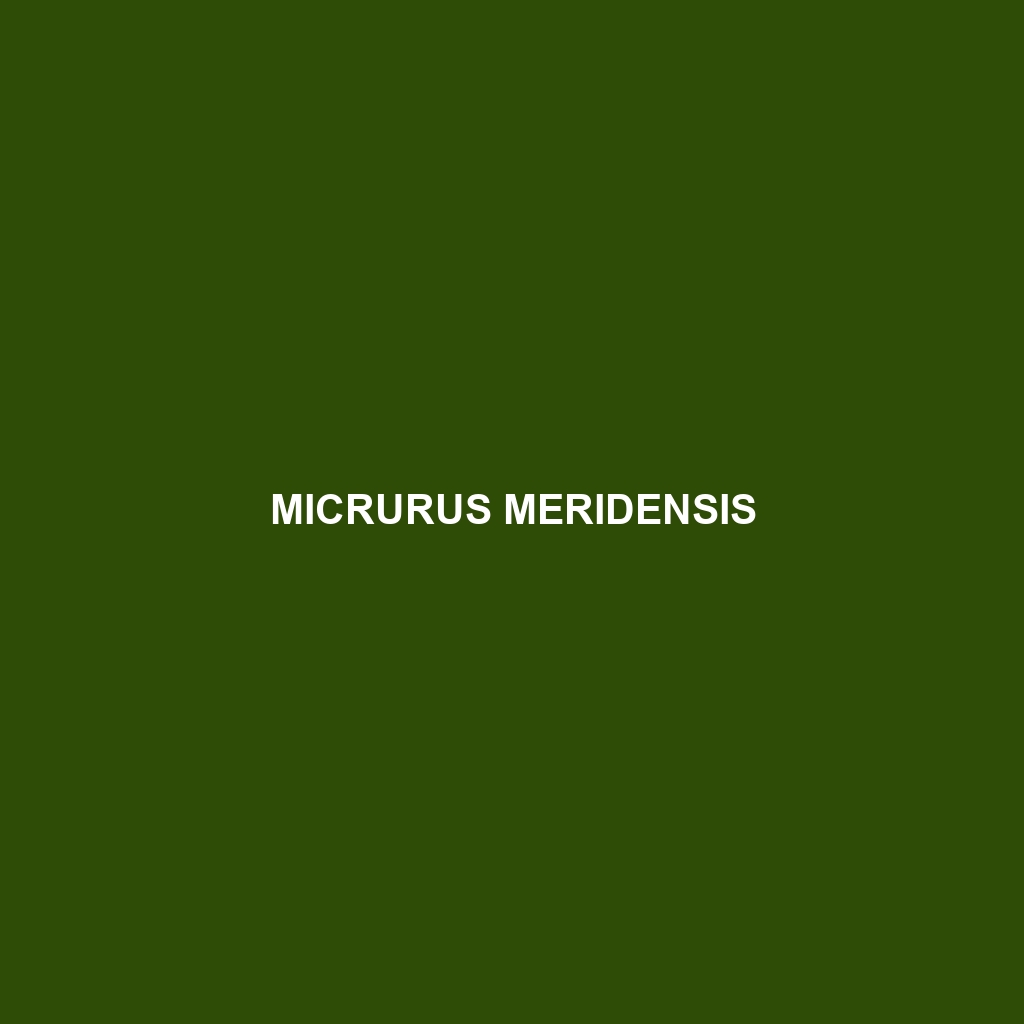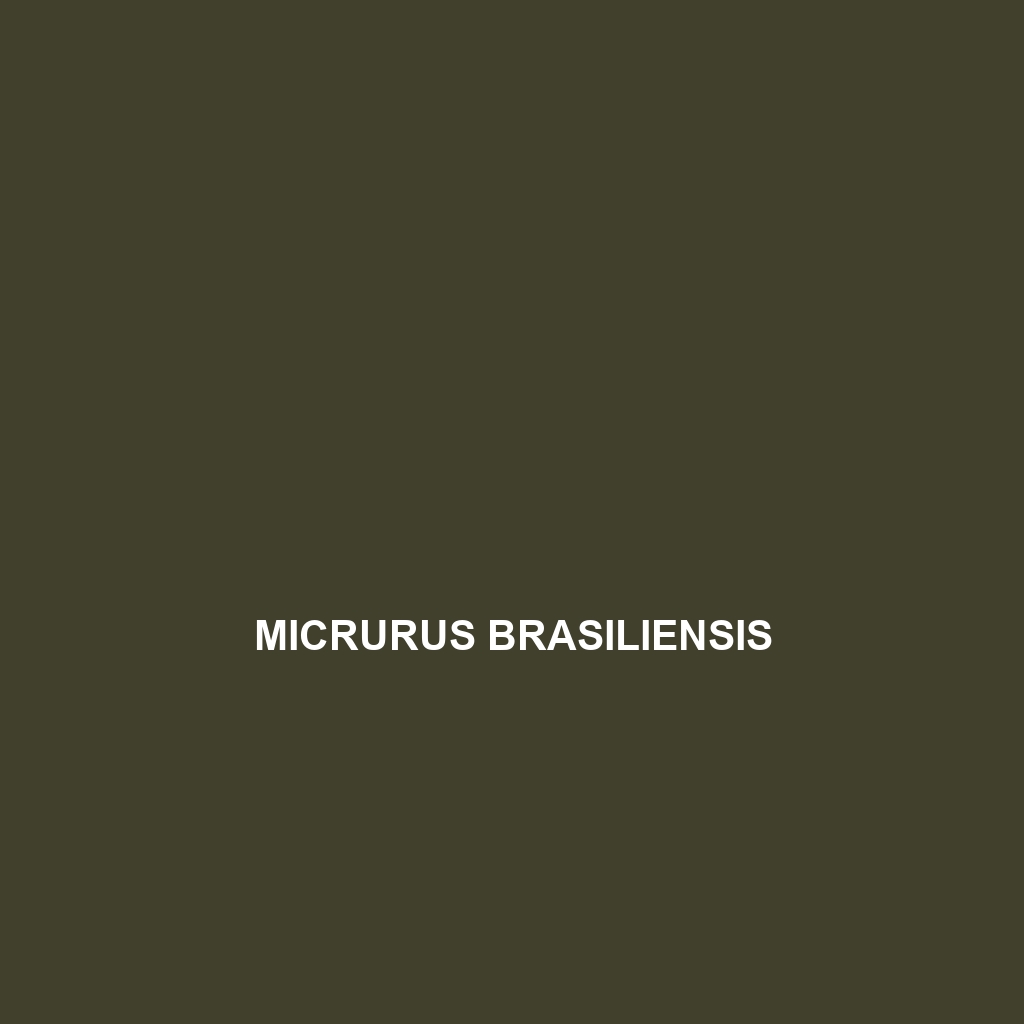Discover the Phalotris normanscotti, or Normanscott's snake, a slender, nocturnal predator native to the tropical rainforests and savannas of Brazil, recognized for its deep olive green to brown coloration and remarkable camouflage. This species plays a vital role in its ecosystem by controlling small vertebrate populations, showcasing unique ambush hunting techniques and minimal maternal care after giving birth to live young.
Tag: South American reptiles
Micrurus meridensis
<p><b>Micrurus meridensis</b>, also known as the Venezuelan Coral Snake, is a brightly colored, nocturnal snake characterized by its striking black and red bands with white or yellow margins. Found primarily in the rainforests of Venezuela, this venomous species plays a crucial role in its ecosystem as both a predator and prey, showcasing impressive adaptability to its lush, humid habitat.</p>
Micrurus brasiliensis
<b>Micrurus brasiliensis</b>, or the Brazilian Coral Snake, is a strikingly colored species found in South America's tropical rainforests, recognized by its distinctive black, red, and yellow banding. This nocturnal predator plays a vital role in maintaining local ecosystems through its diet of small reptiles and amphibians.
Lycodryas gaimardi
Lycodryas gaimardi, commonly known as Gaimard's snake, is a medium-sized, nocturnal carnivore found in the tropical and subtropical forests of South America, characterized by its slender body, intricate color patterns, and ability to blend into its surroundings for effective hunting. This adaptable species plays a vital role in its ecosystem by regulating prey populations and serving as an important indicator of biodiversity.
Liolaemus ubaghsi
Introducing the Liolaemus ubaghsi, a unique lizard native to the rugged Andes mountains of Argentina, known for its vibrant coloration and robust body, measuring 7 to 10 centimeters. This resilient insectivore thrives in various habitats, exhibiting diurnal behavior and impressive climbing abilities, making it a vital part of its ecosystem.
Liolaemus thermarum
<p><b>Liolaemus thermarum</b> is a unique, medium-sized lizard native to the high-altitude Andes, characterized by vibrant coloration and diurnal behavior. This insectivore thrives in rocky, temperate forest habitats, playing a crucial role in the ecosystem by controlling insect populations and serving as an important food source for predators.</p>
Liolaemus ramirezae
<p><b>Liolaemus ramirezae</b> is a medium-sized lizard native to the temperate rainforests of southern Chile and Argentina, known for its vibrant coloration and excellent climbing abilities. This adaptable insectivore plays a crucial role in its ecosystem by controlling insect populations while serving as a food source for larger predators.</p>
Liolaemus pipanaco
<p><b>Liolaemus pipanaco</b> is a small, resilient lizard found in the arid regions of northern Argentina, displaying distinct sandy brown to greenish coloration with dark patterns for effective camouflage. This diurnal insectivore thrives in rocky environments, exhibiting adaptability through unique climbing abilities and ovoviviparous reproduction, while playing a crucial role in controlling insect populations within its ecosystem.</p>
Liolaemus parvus
Liolaemus parvus is a small, insectivorous lizard native to the temperate forests and savannas of Argentina and Chile, typically measuring 5 to 10 centimeters in length. Known for its distinctive coloration and rough texture, this diurnal species plays a crucial role in its ecosystem by controlling insect populations while also serving as prey for various birds and mammals.
Liolaemus montanezi
Liolaemus montanezi, commonly found in the Andes, is a diurnal lizard known for its adaptability to diverse habitats, ranging from temperate forests to alpine environments. With a diet primarily consisting of insects, this vibrant species showcases distinct coloration and unique physiological traits that enable it to thrive at high altitudes while playing a crucial role in its ecosystem.









